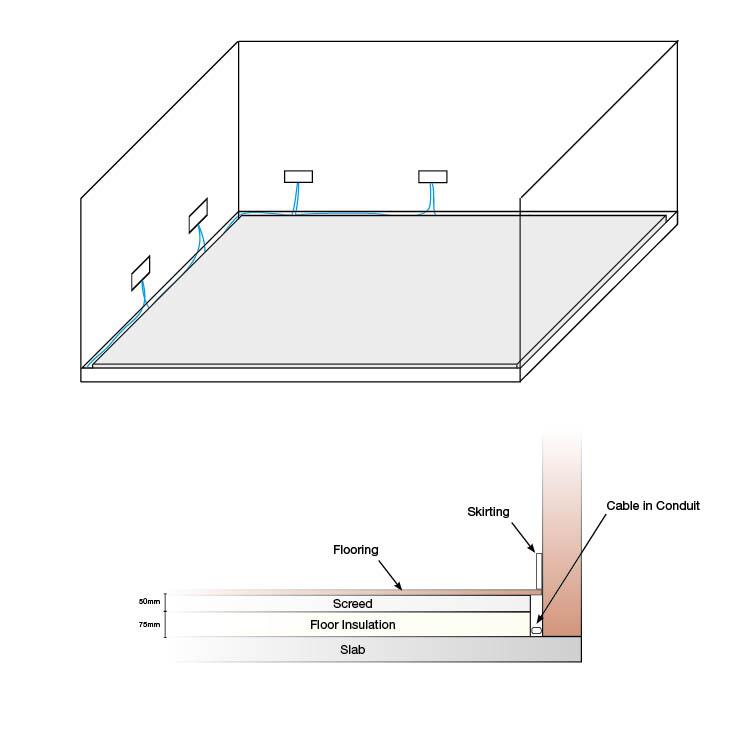Hello.
I appreciate that this is slightly unorthodox, but my Building Inspector and Electricians can't make their mind up. They equally say as long as the other person thinks it's okay...
Anyway, recently I have had wet UFH laid (pipes in screed) and as a result I have a lovely 1 inch perimeter around the whole of downstairs from where the perimeter insulation was/is.
I was wondering, to save a lot of hacking of plaster and to make the installation easier, if it was feasible to run the electrical wiring along the perimeter:
I can obviously insert the wiring into conduit, but I can't really see this being necessary? The wiring sits well below the skirting fixing zone (apart from the rise to sockets).
What are your thoughts? Am I headed for a mental asylum?! Cheers!
I appreciate that this is slightly unorthodox, but my Building Inspector and Electricians can't make their mind up. They equally say as long as the other person thinks it's okay...
Anyway, recently I have had wet UFH laid (pipes in screed) and as a result I have a lovely 1 inch perimeter around the whole of downstairs from where the perimeter insulation was/is.
I was wondering, to save a lot of hacking of plaster and to make the installation easier, if it was feasible to run the electrical wiring along the perimeter:
I can obviously insert the wiring into conduit, but I can't really see this being necessary? The wiring sits well below the skirting fixing zone (apart from the rise to sockets).
What are your thoughts? Am I headed for a mental asylum?! Cheers!


